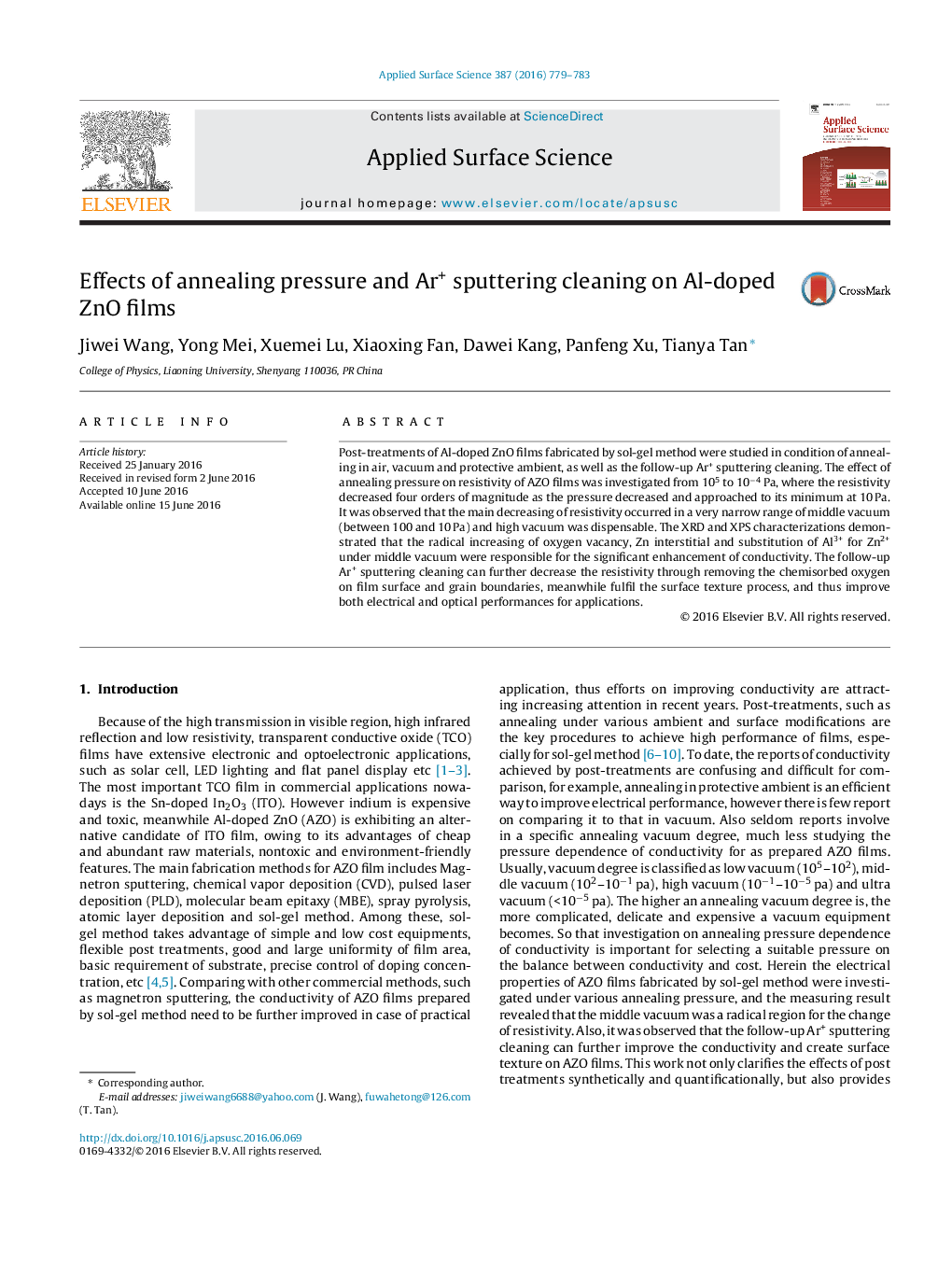| کد مقاله | کد نشریه | سال انتشار | مقاله انگلیسی | نسخه تمام متن |
|---|---|---|---|---|
| 5353693 | 1503580 | 2016 | 5 صفحه PDF | دانلود رایگان |

- First, it reveals the main decreasing of resistivity of AZO films occurs in a very narrow range of middle vacuum, and high vacuum is dispensable. Second, it is a breakthrough that Ar+ sputtering cleaning can further decrease the resistivity of AZO films, meanwhile fulfil the surface texture process, which is very useful for photovoltaic applications. Thirdly, it demonstrates that more Zn2+ ions are replaced by Al3+, lattice oxygen decreases while oxygen vacancy increases greatly in middle vacuum, and thus conductivity of AZO films are improved significantly; Finally, it provides a very promising design for post-treatment equipment, where vacuum annealing, further optimization, surface texture can be carried out in an exactly controllable and low cost way.
Post-treatments of Al-doped ZnO films fabricated by sol-gel method were studied in condition of annealing in air, vacuum and protective ambient, as well as the follow-up Ar+ sputtering cleaning. The effect of annealing pressure on resistivity of AZO films was investigated from 105 to 10â4Â Pa, where the resistivity decreased four orders of magnitude as the pressure decreased and approached to its minimum at 10Â Pa. It was observed that the main decreasing of resistivity occurred in a very narrow range of middle vacuum (between 100 and 10Â Pa) and high vacuum was dispensable. The XRD and XPS characterizations demonstrated that the radical increasing of oxygen vacancy, Zn interstitial and substitution of Al3+ for Zn2+ under middle vacuum were responsible for the significant enhancement of conductivity. The follow-up Ar+ sputtering cleaning can further decrease the resistivity through removing the chemisorbed oxygen on film surface and grain boundaries, meanwhile fulfil the surface texture process, and thus improve both electrical and optical performances for applications.
Journal: Applied Surface Science - Volume 387, 30 November 2016, Pages 779-783